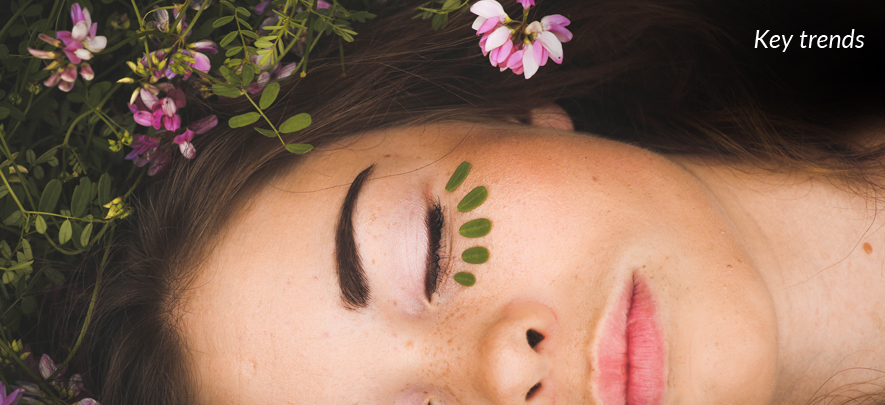
Beauty and wellness industry: Key trends

Health & Lifestyle
243 week ago — 10 min read
In our previous article we shared the structure of the wellness and beauty industry in India, the operating model it follows and the key drivers of this industry. It was interesting to note that one of the most promising industries in India, the wellness and beauty industry is driven by factors like rising cost of healthcare, rising disposable income, an increased awareness about grooming amongst men and so on. In this article we will give you an insight into the key trends that drive the beauty and wellness industry in India.
Excerpts from the report titled Wellness and beauty- An ecosystem in the making by Federation of Indian Chambers of Commerce and Industry (FICCI) in collaboration with Ernst & Young (EY).
Here are the key trends ruling the wellness and beauty industry:
1. Digital disruption
While beauty segment has just kick-started with its digital journey, wellness has covered a relatively longer distance. The digital strategy of any company comprises of three key pillars:
- Customer engagement- This includes extensive usage of digital platforms such as apps and social media to constantly engage with the customers. This helps companies to interact with its customers in real-time and evolve as per their expectations and feedback.
- Operational optimization- this includes adoption of latest technologies to enhance operational efficiency by saving time and money. Supply chain digitisation, online data storage, virtual monitoring and tracking are some of the key focus areas today.
- Product and service transformation- this includes introduction of innovative products and services, driven by disruptive technologies.
There is a growing trend to use natural or organic products in wellness and beauty industry. This has led to the emergence of large number of organic salons, spas and product launches.
2. Consumer convenience
The wellness and beauty industry is adopting various means to enhance convenience for customers amidst their fast-paced lives. The following are some emerging models in the industry:
- On-demand at-home services- Rising consumerism, penetration of smartphones and internet and increasing working-class population have created perfect opportunities for companies to explore on-demand at-home service model. In 2017, on-demand at-home services market was estimated at US$2.7b, with the organized section of the industry forecast to grow at an annual rate of 18.6%. Housejoy have 30% of their revenues coming from beauty services (highest margin segment 30%-40%, with an average order value of US$21). Similarly, UrbanClap earned 20% revenues (highest) in 2017 from beauty services with ~65% monthly repeat orders and an average order value of US$21.
- Personalisation- In order to create a personal bond with the customer and retain them for a longer duration, the focus on customisation has increased exponentially.The industry is experiencing a rapid expansion of personalized fitness studios across the country.
- Pay-per-use services- Several fitness centres like Fitternity and Fitpass allow their users to pay-per-use, instead of asking them to shed a hefty annual or semi-annual membership fees.
- Subscription services- The target is to drive one-third of its revenues from subscribers. In 2018, “Be U Salons” launched country’s first subscription-based model across its 85 branches in Delhi-NCR and Bengaluru to incentivize loyal customers and early adopters by providing full month’s maintenance services at a subsidised price. The subscription offered two variants – Gold and Silver.
- Innovative pricing- Companies are introducing innovative pricing strategies to win consumers’ trust. Online beauty services aggregator, Yes Madam, offers complete transparency by using mono (one-time use) doses of products and charges for per-minute service. This gives a fair idea to customers about the material cost used in a particular service. The packages are opened in front of the customers before they are used and the left overs are handed over to the customers for the future use. The cost of per minute service depends on the rating of the beautician on the app and other factors.
Also read: Beauty and wellness industry: Key segments and growth opportunities
3. Use of natural products
There is a growing trend to use natural or organic products in wellness and beauty industry. This has led to the emergence of large number of organic salons, spas and product launches.
The following salons saw an emergence in the recent years:
- Relooking, a weight loss, slimming and beauty enhancing center for both men and women
- Bella Vita Organic Salon
- N.O.W (Natural Organic World) organic salon
- Orrganic Elemennt, an organic, vegan and cruelty free “spalon” (combination of spa and salon)
These players use only natural ingredients such as ayurvedic herbs, fruits, vegetables, plant extracts and pure essential oils to provide unique services like neem facials, oatmeal scrub and plush papaya body polish. Riding on the growing wave of natural products and ingredients, several consumer goods companies have also expanded their portfolio to include natural or herbal range products.
In March 2018, Amway introduced herbal products range under Nutrilite brand, which includes Nutrilite Tulsi, Nutrilite Brahmi, Nutrilite Ashwagandha, etc. and is expected to cross US$14m9 of sales in 2018. HUL has also launched natural variants in its haircare care brands like Tresemme Botanique and Clinic Plus Ayurveda. Dabur launched a slew of new Ayurveda-based products such as gel toothpaste, cough and cold remedy, diabetes remedy, etc.
4. Expansion to non-metro cities
As the markets in metro cities reach saturation, the companies have started targeting the tier-II and tier-III cities for growth opportunities. Also, the acceptance of salons and spas in tier-II and tier-III cities have recently gone up as people are willing to spend more on their looks and want to enjoy experience-based services.
Also read: A new breed of wellpreneurs reimagine age-old wisdom for contemporary times
5. Corporate wellness
Corporate wellness refers to the workplace health promotion policy or initiatives towards improving the health and wellbeing of employees. These programs offer a plethora of services including gym within the office premises, free health check-ups, availability of healthy food, health clubs, insurance, etc. Corporate wellness is increasingly being recognized as a dual benefit tool, which ensures economic as well as social benefit of the society.
6. Mass engagement events
The like, share and comment culture has written amazing growth stories for several brands, events and concepts. Union minister Rajyavardhan Rathore responded to the Prime Minister Narendra Modi’s call for a “Fit India” movement, by initiating a social media fitness challenge. It went viral with a hashtag “#HumFitTohIndiaFit” and saw participation of prominent personalities such as Akshay Kumar, Virat Kohli, Hritik Roshan, Saina Nehwal, etc.
Companies too are leveraging the power of social media to not only reach consumers directly, but are also creating awareness around wellness.
7. Diversification
Companies are leveraging their existing resources, knowledge and network to tap the potential in adjacent industries or similar businesses. Lloyds Luxuries, the master franchisee of “Truefitt & Hill” in India is expanding into women’s salon which will be located only in luxury hotels. VLCC started as a fitness and slimming company and now cuts across multiple industries such as aesthetic dermatology, salons, spas and beauty products. Kaya Clinic, a leading aesthetic dermatology company, recently rebranded itself to focus not just on skin care but also hair care segment. It is also expanding to body contouring segment in aesthetic dermatology. Kaya Clinic, a leading aesthetic dermatology company, recently rebranded itself to focus not just on skin care but also hair care segment. It is also expanding to body contouring segment in aesthetic dermatology.
8. Rise of non-surgical procedures
There is a growing trend towards non-invasive or minimally invasive cosmetic procedures. In 2016, it captured 52% of the total cosmetic procedures market in India and around 82% of the plastic surgeons performed Botox procedures. Further, more celebrities are opting for hair removal, photo rejuvenation, microdermabrasion, etc. which has motivated ordinary people to follow the trend as they want to copy their favourite personalities.
As you can see, people are swiftly adopting changing trends in the beauty and wellness industry. And this goes on to show that India truly holds the potential to emerge as the strongest market for beauty and wellness products.The next article in the series will focus on the wellness and tourism industry, employment opportunities and some key challenges faced by this industry.
Also read: Beauty and wellness industry: Industry structure and key drivers
Source: Wellness and beauty- An ecosystem in the making by Federation of Indian Chambers of Commerce and Industry (FICCI) in collaboration with EY.
Image courtesy: unsplash.com
Posted by
GlobalLinker StaffWe are a team of experienced industry professionals committed to sharing our knowledge and skills with small & medium enterprises.
Network with SMEs mentioned in this article
View GlobalLinker 's profile
SME Inspirations
Most read this week






















Comments (1)
Please login or Register to join the discussion